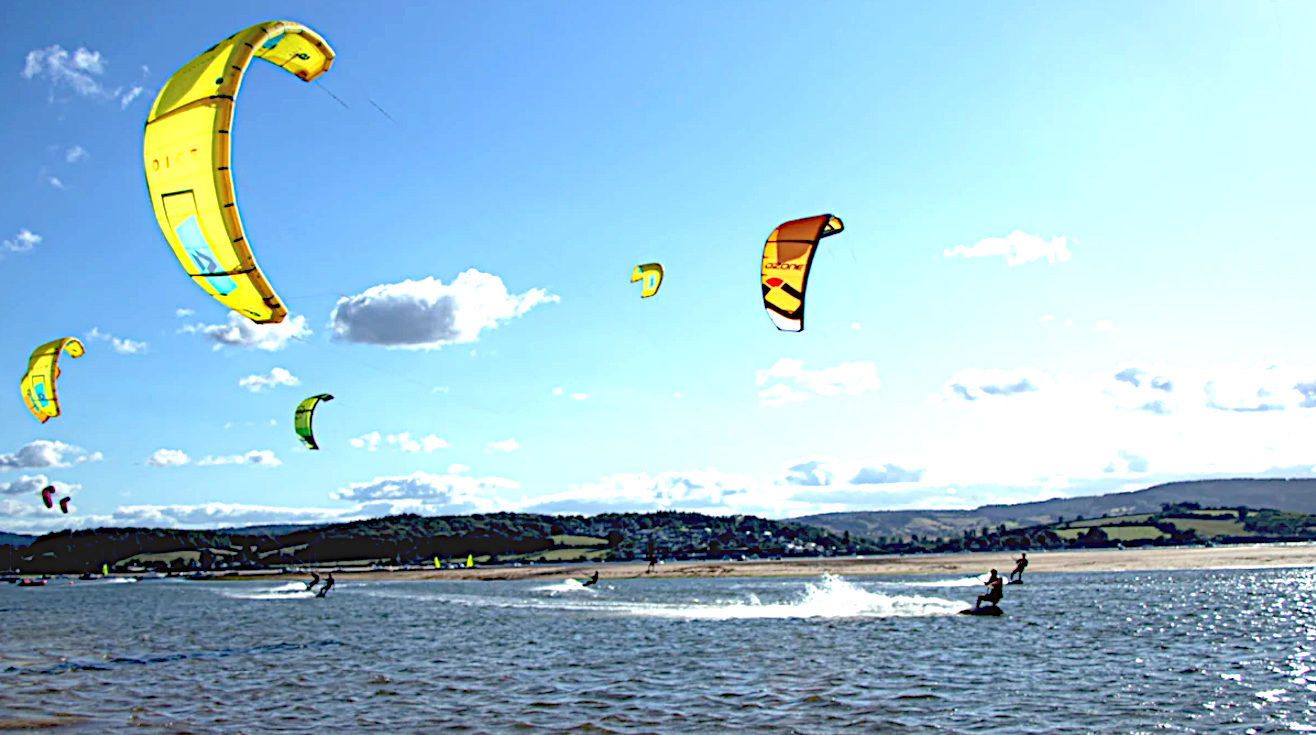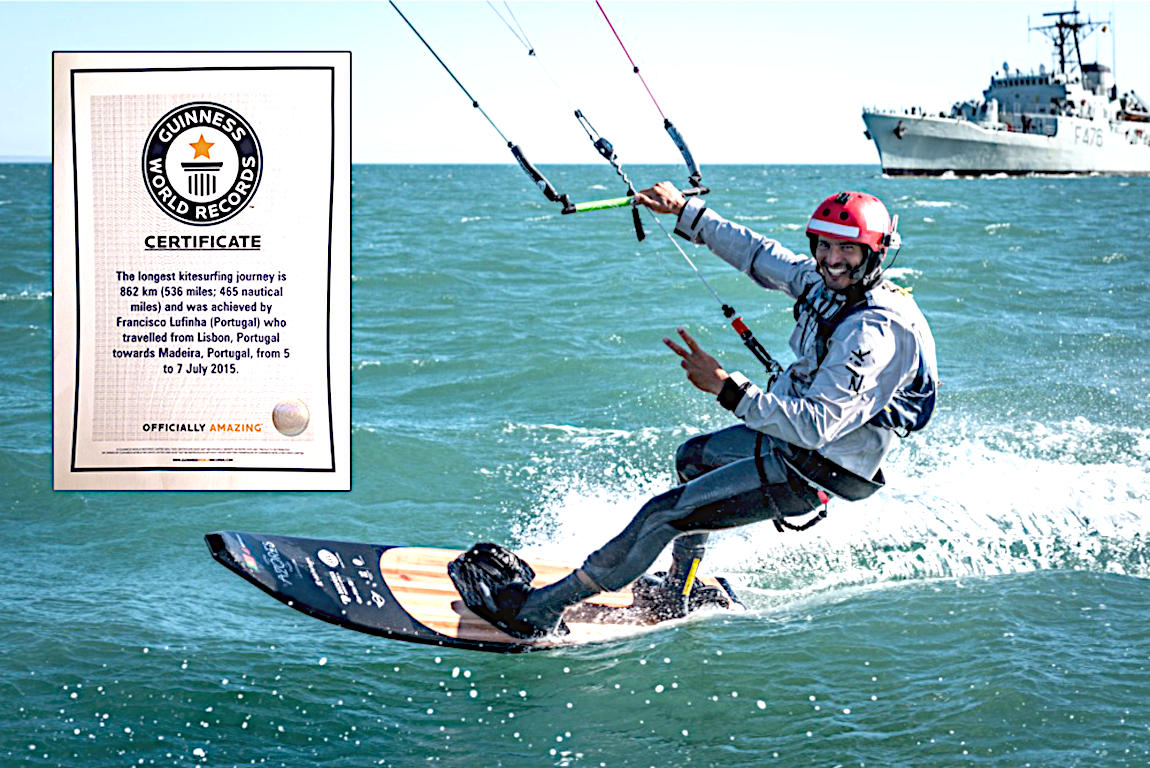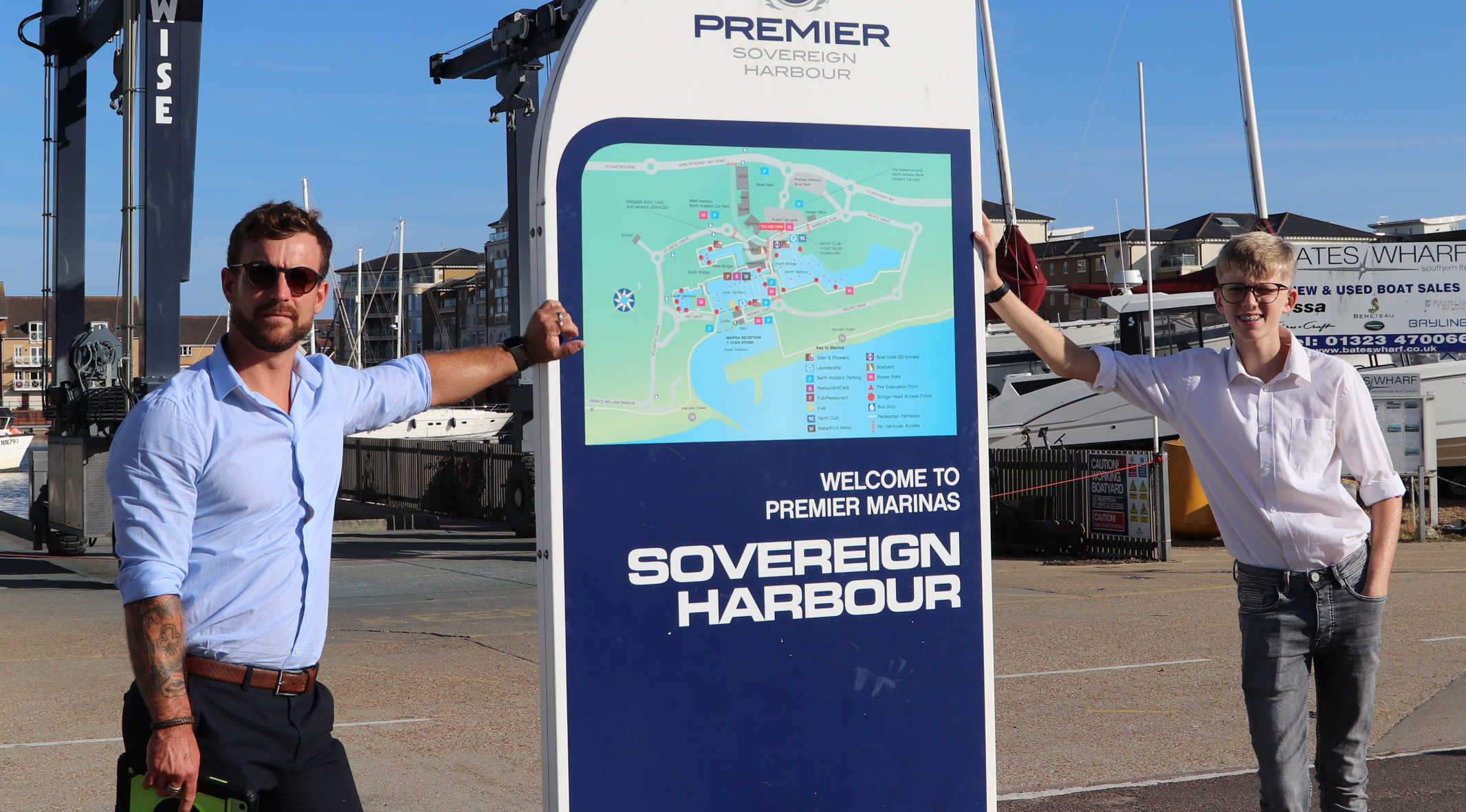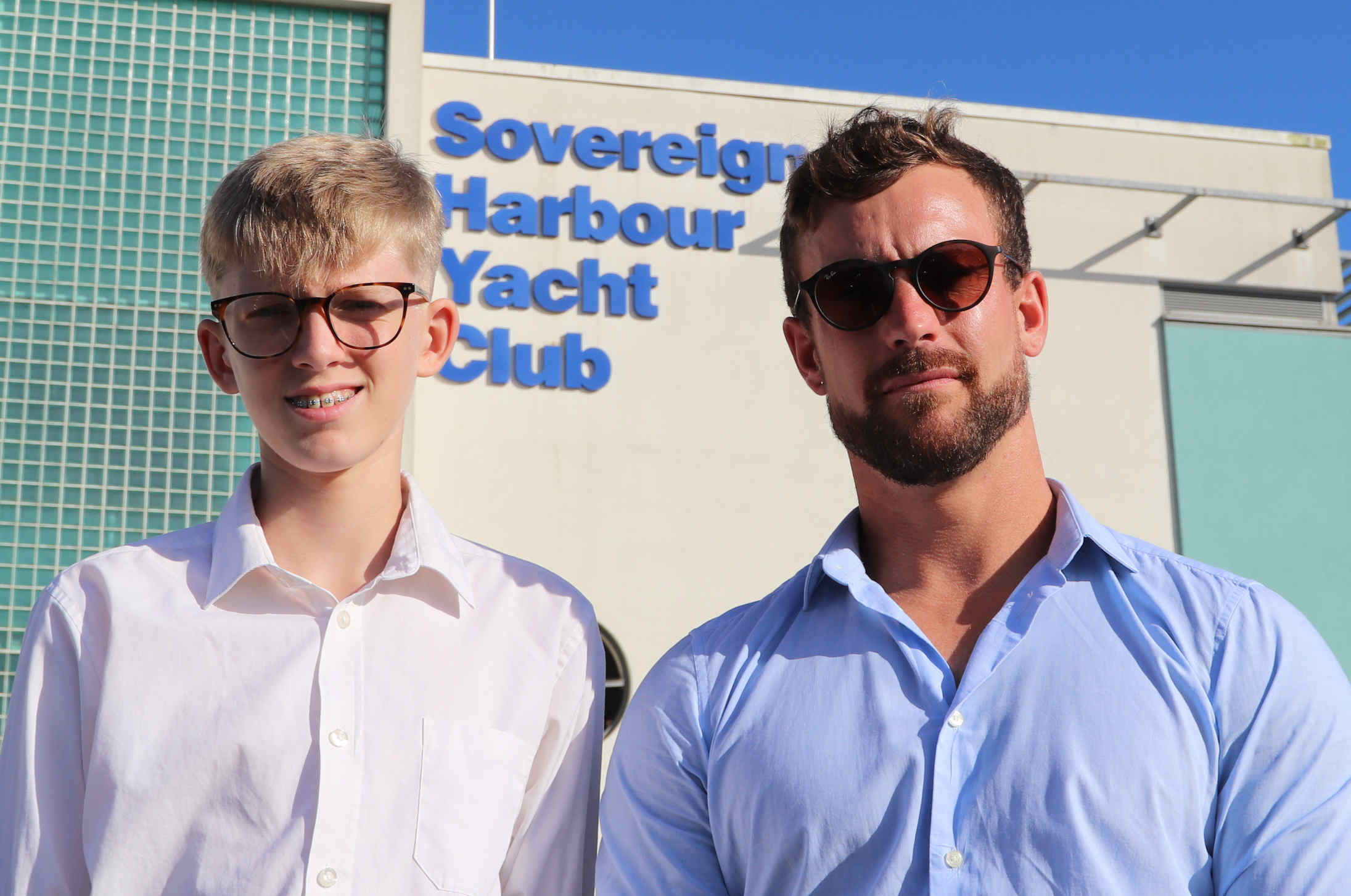
Kitesurfing (or kiteboarding) is a wind powered surface watersport using a kite and a board to move across the water.
Kitesurfing harnesses the power of the wind through a large parachute type kite to propel a rider across the water on a small surfboard or a kiteboard (similar to a wakeboard).
Although the name suggests waves are needed to surf, kitesurfing only
requires the wind to power you along. Flat water locations such as Camber
(UK) are favoured by riders looking to perform freestyle as the water is smooth so easier to take off and land on. With the large range of conditions to ride in, whether ‘surfing’ in the waves, going for big jumps, taking out a GPS for a speed records, learning a new freestyle trick or on a long distance adventure kitesurfing never becomes boring or repetitive.
Kiteboarding is among the less expensive and the more convenient of the sailing sports.
After some concepts emerged in the late 1970s and early 1980s, some designs were successfully tested, the sport received a wider audience in the late 1990s and became mainstream at the turn of the century. It has freestyle, wave-riding, and racing competitions. The sport held the speed sailing record, reaching 55.65 kn (103.06 km/h) before being eclipsed by the 65.45 kn (121.21 km/h) Vestas Sailrocket. Worldwide, there are 1.5 million kitesurfers, while the industry sells around 100,000 to 150,000 kites per year.
Most power kites are leading edge inflatable kites, sometimes foil kites, attached by about 20 m (66 ft) of flying lines to a control bar and a harness. The kitesurfer rides on a bidirectional board (a "twin-tip", similar to a wakeboard) or a directional surfboard, sometimes on a foilboard. They often wear a wetsuit in mild to cold waters. The early days of the sport experienced injuries and some fatalities, but the safety record has improved with better equipment and instruction.
SPEED RECORDS
French kitesurfer Sébastien Cattelan [fr] became the first sailor to break the 50 knots barrier by reaching 50.26 knots on 3 October 2008 at the Lüderitz Speed Challenge in Namibia. On 4 October, Alex Caizergues [fr] (also of France) broke this record with a 50.57 knots run. Similar speeds are reached by windsurfers in the same location by Anders Bringdal and Antoine Albeau, respectively 50.46 and 50.59 knots. These speeds are verified, but are still subject to ratification by the World Sailing Speed Record Council. Earlier in the event, on 19 September, American Rob Douglas reached 49.84 knots (92.30 km/h), becoming the first kitesurfer to establish an outright world record in speed sailing. Previously the record was held only by sailboats or windsurfers. Douglas also became the world's third over-50 knots sailor, when on 8 September he made a 50.54 knots (93.60 km/h) run.
On 14 November 2009, Alex Caizergues completed another run of 50.98 knots in Namibia.
October 2010, Rob Douglas became the outright record holder for the short distance 500 meters with 55.65 knots. Sébastien Cattelan became the record holder of France and Europe with 55.49 and was the first rider to reach 55 knots.
On 13 November 2017, French rider Alex Caizergues [fr] became the new world speed record holder in France (Salin-de-Giraud) reaching 57.97 knots or 107.36 km/h.
JUMP RECORDS
Jump records (height, length, time)
Nick Jacobsen achieved the world record for the highest kite jump measured by WOO Sports on February 19, 2017 in Cape Town, South Africa, during a session with 40-knot winds. Jacobsen's jump reached 28.6 meters high, with an airtime of 8.5 seconds. The record was broken several times since then and WOO Sports maintains jump-related leaderboards in different categories (airtime, height, etc.) based on the data recorded and uploaded by its users. The current record holder for the height of a single jump is Maarten Haeger at 34.8m.
Jesse Richman holds the record for hangtime at 22 seconds, set at Crissy Field in San Francisco, California. Airton Cozzolino holds the record for strapless hangtime at 19 seconds.

Francisco Lufinha covered 569.5 kilometers from Porto to Lagos, Portugal in September 2013. Then he covered 874 km (472 nmi) between Lisbon and Madeira on 7 July 2015 - and on 13 September 2017, he covered 1,646 km (889 nmi) with Anke Brandt from Azores to Portugal Mainland.
LONG DISTANCE
Louis Tapper completed the longest recorded kite journey, completing 2000 km between Salvador and Sao Luis, Brazil. The journey was completed between July/August 2010 and took over 24 days of kitesurfing. This trip is also the longest solo journey, completed without a support crew, using one kite and a 35-liter backpack.
The previous longest recorded kite journey was by Eric Gramond who completed a 13-day trip of 1450 km along the coast of Brazil.
Bering Strait crossing
Constantin Bisanz, a 41-year-old Austrian, crossed a 80 km (50 mi) stretch of the Bering Strait embarking from Wales, Alaska, US on 12 August 2011 at 04:00, and arriving in easternmost Russia two hours later, after which he returned by boat to Alaska. It occurred after 2 previously failed attempts, the first of which was on 28 July 2011, in which an incident occurred where he found himself floating in 36 °F water with no board, kite, or GPS unit for 1 hour before being rescued. On his second attempt on 2 August he and two friends sailed half the distance before turning around due to poor wind conditions.
Transatlantic crossing
A team of six kitesurfers, Filippo van Hellenberg Hubar, Eric Pequeno, Max Blom, Camilla Ringvold, Ike Frans, and Dennis Gijsbers crossed the Atlantic Ocean, from the Canary Islands to the Turks and Caicos Islands a distance of about 5,600 km (3,500 mi), from 20 November 2013, to 17 December 2013. Each of the six spent four hours each day surfing, broken into two sessions of two hours each, one during the day, and the other during the night.
The UK was one of the best places in the world to learn how to kitesurf, now marred by
raw sewage being pumped into the sea by irresponsible water companies. The UK does not have the white sands and clear waters of places like the
Caribbean
Sea islands, now also strewn with sargassum, but what the UK lacks in tropical conditions, is made up for in perfect wind conditions, and good teaching facilities.
FIVE LOCATIONS ON THE SOUTH COAST OF ENGLAND
Marazion, Cornwall
Marazion in West Cornwall is a very popular spot, with its breathtaking location featuring the stunning backdrop of St Michael's Mount. Its huge shallow bay is great for wave riding and freestyle surfs. The bay picks up a wide rolling swell when it’s pushing from the South West. At either end of the bay, large areas of rocks act like a shelter which keeps the water flat and calm, making this the perfect spot for beginners as well as more advanced kitesurfers.
Exmouth, Devon
There are two main kitesurfing spots in Exmouth: Exmouth Duckpond and Exmouth Seafront. Exmouth Duckpond offers a large surfing area at high tide and is perfect for beginners. It provides flat to choppy water and shallow depths making it a great place to learn and improve. The best time to kitesurf is ideally around 3 hrs before high tide. Exmouth Seafront is most popular amongst more experienced riders, providing a whole range of conditions depending on the wind direction and tide state. The main area is sheltered by a massive sandbank which keeps the swell at bay and provides great flat-water conditions.
Calshot, Southampton
This unique destination is almost completely surrounded by water and offers some of the best kitesurfing conditions on the South coast. It can be used going in any direction with the prevailing South West wind blowing cross shore. During the summer months, sea breezes are funnelled down the Solent between the mainland and the Isle of Wight. Also, the fact that the breeze is generated from both the island and the mainland can result in some perfect windy conditions.
Bracklesham Bay, Chichester
Bracklesham Bay is another one of the best places to kitesurf on the South coast. As well as being one of the most stunning bays with a long stretch of golden sandy beach, it is also the spot to experience some amazing sunsets! It’s an ideal location for beginners because the beach is safe and gently shelved. It has prime wind conditions with a South West wind that guides kitesurfers back towards the beach rather than out to sea.
Lancing Beach, Worthing
Lancing beach is a great place to kitesurf for people of all abilities, from beginners to more advanced levels. The gently shelving and shallow beaches make this a perfect location for beginners to learn. In the summer months, the sea is flat and during the winter months, it offers entry-level wave conditions. Also, there are clearly marked zones for teaching and for freeriding.

TEAM
ELIZABETH SWANN - A different kind of water sport: Terry and Ryan are team members of the Elizabeth Swann,
JVH2, hydrogen powered ocean racing trimaran.
A boat designed to challenge the diesel
record, to achieve a circumnavigation
in under 80
days - as per the famous Jules Verne novel. Terry says: The fitness fundamentals for sailors are aerobic endurance and muscle
strength is much the same as for most water sports. Diet is very
important, linked to a good exercise regime. Terry is a vegan and
personal trainer. He has
never been fitter and stronger, than when changing to a no-meat dietary
plan. Their team are looking for an experienced skipper on the south coast of
England, for an attempt at, and to set a Jules
Verne zero emission record, aiming for a boat in the water by 2024 - the
150th anniversary of Verne's prediction that H2 would be the fuel of the
future. Contact
the Cleaner Ocean Foundation for more information.
PREPARING
FOR YOUR CHOSEN WATER SPORT
Most water sporting enthusiasts don’t need an intensive exercise regime to
enjoy their chosen sport, which tends to keep you fit and active
stand-alone. That said, strength and endurance can be really beneficial when you’re spending
a lot of time on, or in the water - and give you the endurance edge over other teams in, for example, competitions, when you will need a far higher level of power and endurance.
Especially swimmers and rowers.
The type of water sport you love will impact the type of training you need. It is specific to your
expectations. For example, leisure canoeing and scuba divers may not need to be ocean athletes. But it pays to keep your body in good condition, to be able to meet
any challenges rivers
and seas can throw at
you, and keep your mind alert to changing conditions, when the
opportunity to build up stamina during sporting activities is limited,
those exertions rather draining reserves.
Diet is important, to help you stay in shape, and to build up your stamina before embarking on your
water based adventures. Water being one of the most important
ingredients for life
on planet earth.
Exercise and diet is thus interlinked, especially for those who are climate
conscious, perhaps contemplating a pescatarian,
vegetarian, or most demanding of all, a
vegan diet while afloat.
When you can’t get out or in the water, try to work on your fitness at home instead. It is hard to stay in shape during
off-seasons, with high calorie meals during winter celebrations, that pile on the pounds. Making it all the more difficult to stay fighting fit when it’s time to get back
to your water sport.

YOUTH
OCEAN AMBASSADOR - Ryan is the youngest member of the Elizabeth Swann
team. He is coached in fitness matters by Terry, a seasoned vegan, having
weaned himself off meats over a year ago. Ryan has been attending
exhibitions and events for many
years. Often helping to man the stands at events where (for example) the
SeaVax
proof of concept vessel was on
display.
WATER
SPORTS A - Z
Canoeing
Diving (high)
Kite Surfing
Kayaking
Octopush
Olympics Games
Rowing
Scuba Diving
Surfing
Swimming
Water Polo
Water Skiing
Whitewater Rafting
Yachting
The
stronger you become both
mentally and physically, the better you will become at coping with the stresses associated with competition, if that is your aim. You need to be sharp, prepared and capable in order to win competitions.
Especially when competing in the Olympic
Games.
If you want to improve your general fitness, you don't need to be quite so disciplined and focused. But, it pays to make the effort when you can.
So think about your health, diet and exercise, for which you will see
results, and being healthier, is one way of remaining youthful and
living longer.
If it was easy, then everyone would be doing it.


